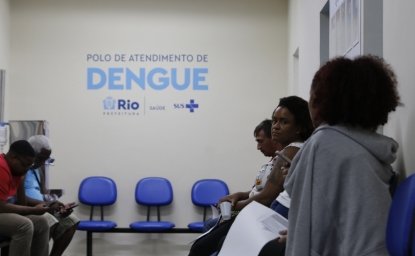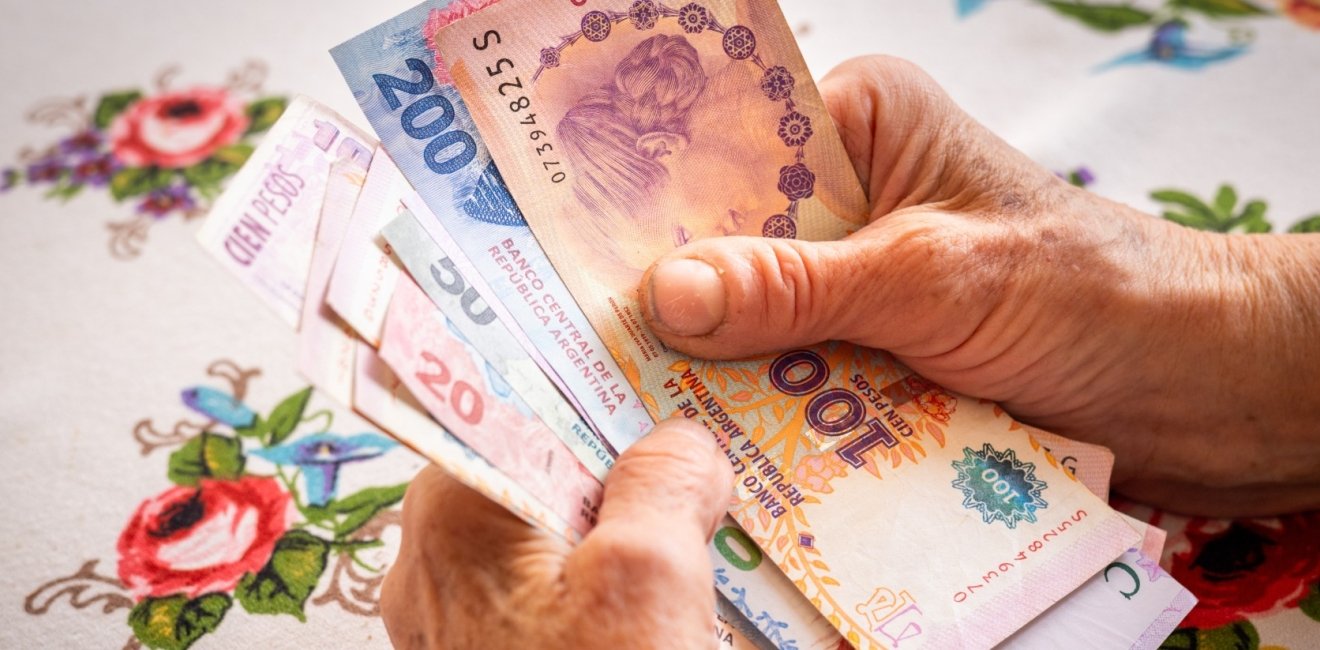
A blog of the Latin America Program
Q: Argentina already has triple-digit inflation. Can it really get much worse? What is the threshold for “hyperinflation” and why is it such a big deal?
A: One of the most interesting–and baffling–aspects of hyperinflations is that they lack a “scientific” definition or a numerical threshold. In fact, hyperinflations share an infamous characteristic with pornography: you know it when you see it.
Hyperinflation is not just a very high level of inflation. High inflation can be brought down by the typical mix of macroeconomic policies, such as cuts in government spending and an increase in interest rates. Hyperinflations, however, do not respond to the usual policy mix because they are not just the result of economies that are running “too hot.” They are, first and foremost, the result of a complete breakdown in trust. Trust in what? Trust in the institutions that ensure that a one dollar bill will buy one dollar’s worth of goods. Without that trust, consumers will repudiate the currency, sparking a run to exchange paper money for goods. This sets off a spiral of rising prices that is extremely disruptive for the economy and for livelihoods.
Q: Latin America is no stranger to hyperinflation, including in Argentina, where everyone old enough remembers it from the late 1980s. But in recent years, the region’s major economies seemed to get monetary policy under control. In fact, the central bank governors in Brazil, Colombia, Chile, and Peru are famous for acting fast to control inflation following the pandemic. So what is going wrong in Argentina?
A: Over the last three decades, the region’s major economies underwent profound monetary and institutional reforms that ended the boom-bust cycles of the past and, in some cases, the accompanying hyperinflation. Brazil is a case in point. After enduring 20 years of hyperinflation, and failing time and again to control it, the country adopted the ambitious Plano Real (Real Plan) in 1994, which entailed far-reaching fiscal, institutional, and monetary overhauls. The reforms ended hyperinflation for good by rebuilding the institutional trust necessary to execute credible monetary policy. By contrast, Argentina has never implemented the same type of institutional overhaul. Instead, it has relied on tying the peso to the US dollar to regain trust in policymaking. Such was the case with the ambitious Convertibility Plan in 1991, which brought short-term price stability but failed spectacularly in 2001, when Argentina suffered the worst financial crisis in its lengthy history of turmoil.
Q: There’s a saying that there are four types of economies: advanced, developing, Japan, and Argentina. Is Argentina really so different? Or are there standard formulas for getting inflation under control, beginning with establishing an independent central bank, that also apply to Argentina?
A: I don’t think Argentina is different from any other economy, and certainly no different from its Latin American peers. One could imagine a “Plan Real Argentino,” tailored to the country’s circumstances, and in fact there has been some discussion along those lines. It would be no easy feat, however, as it would require a great deal of political will and coordination. Given political and social fragmentation and polarization, a Plano Real would likely not be feasible today in Brazil either.
Q: The last Argentine government’s approach to inflation was famously heterodox. For example, it insisted that inflation was “multicausal,” in other words, not simply the result of reckless money printing, and its response leaned heavily on price controls. The results were unsatisfying, but did it get anything right?
A: It was right about multicausality. Indeed, inflation–notably hyperinflation–is not just the result of reckless money printing. Inflation arises when political and economic problems accumulate. I like to think of inflation as inflammation: When we develop inflammation somewhere in our body, there are usually many factors involved–for example, an injury that is not adequately treated can get infected and the resulting chronic inflammation can damage tissues further, worsening inflammation. Inflation is similar. That’s why inflation stabilization plans can only work if they are comprehensive and address many issues simultaneously.
Price controls are a typical response to high inflation and many countries in the region have resorted to them. The problem is that they are never sustainable: If a government attempts to hold the prices of goods and services consistently below their true market value, eventually, producers and suppliers will halt delivery and production. In the 1980s, we witnessed extremes of this in both Argentina and Brazil–supermarkets ran out of food and staple goods, leading to massive social unrest. Ultimately, governments often abandon price controls because of shortages and the upheaval they bring.
Q: You raised doubts about “political will” in Argentina, but the country’s new president, Javier Milei, seems open to big ideas. One of them is dollarization. At least as a candidate, Milei was in favor of dollarization. (As president, he is downplaying the idea and advisers who favor the adoption of the US dollar have moved on.) During the campaign, many analysts said dollarization was not feasible because Argentina had insufficient dollar reserves, but now many analysts say it might be the only solution. What is the state of the debate about dollarization in Argentina?
A: When trust in a country’s currency evaporates, there are only two options left: One is to rebuild trust through comprehensive reforms that require a lot of political support and coordination. These reforms inevitably involve the creation of a new domestic currency. It is a lengthy process that involves intense planning and effort; it is what I call the “Plan Real Argentino.” The second option is to give up on a domestic currency and adopt someone else’s. In Argentina, that’s dollarization–the country would abandon the peso and formally adopt the US dollar as legal tender. Three countries in the region have done this: Panama, Ecuador, and El Salvador. Panama uses the dollar because its economy is unequivocally tied to dollar-denominated international trade through the Panama Canal. Ecuador and El Salvador, on the other hand, dollarized for reasons that are very similar to Argentina’s conundrum: Lack of trust in their currencies and institutions forced them to rely on another currency. It’s not working very well for either country.
In the case of Argentina, given the lack of political coordination necessary to formulate and implement a “Plan Real Argentino,” many argue that dollarization is the only option. But dollarization carries very large costs in the medium to long run. Dollarized countries lose policy instruments–namely, monetary policy and exchange rate policy; as a result, their monetary cycles become tied to the those of the United States. Most importantly, dollarization is a one-way street, or a Hotel California of sorts: “you can check out anytime you like, but you can never leave.”
Q: Inflation is arguably Argentina’s biggest problem, yet Milei’s “shock therapy” economic program is making things worse, including by dramatically raising prices for public utilities and significantly devaluing the peso, which makes imports more expensive. In fact, he just announced 20,000- and 50,000-peso notes. Just a year ago, the biggest bill was 1,000 pesos. He’s an economist so he must have foreseen those short-term consequences. What’s going on?
A: In a word, hyperinflation. Milei’s necessary abandonment of price controls and subsidies have fueled price increases in a situation where the population no longer trusts the peso. Hence, inflation accelerates and, eventually, starts feeding off itself, becoming self-sustaining. How does this happen? There are many channels, but the most important is indexation. Once inflation starts to rise at a very fast clip–in December, prices rose by 25.5%–prices, wages, and private contracts typically become linked, formally or informally, to past inflation. This means that one month from now, prices will increase at least as much as they did the month before. This process keeps inflation at a persistently high level that cannot be undone by macroeconomic policies alone. Put differently, fiscal austerity of the sort Milei has proposed will not suffice. A credible anchor to break the endogenous cycle of indexation is needed–usually through some kind of temporary tie between the peso and the dollar–followed by monetary reform, including the creation of a new currency. All of this is missing from Argentina’s stabilization and structural reform plans, increasing the chances that they will fail.
Author


Latin America Program
The Wilson Center’s prestigious Latin America Program provides non-partisan expertise to a broad community of decision makers in the United States and Latin America on critical policy issues facing the Hemisphere. The Program provides insightful and actionable research for policymakers, private sector leaders, journalists, and public intellectuals in the United States and Latin America. To bridge the gap between scholarship and policy action, it fosters new inquiry, sponsors high-level public and private meetings among multiple stakeholders, and explores policy options to improve outcomes for citizens throughout the Americas. Drawing on the Wilson Center’s strength as the nation’s key non-partisan policy forum, the Program serves as a trusted source of analysis and a vital point of contact between the worlds of scholarship and action. Read more


Argentina Project
The Argentina Project is the premier institution for policy-relevant research on politics and economics in Argentina. Read more

Explore More in Weekly Asado
Browse Weekly Asado
Dengue Haunts South America’s Summers

Lessons from Costa Rica’s Economic Transformation

Women and Latin America’s Digital Revolution

